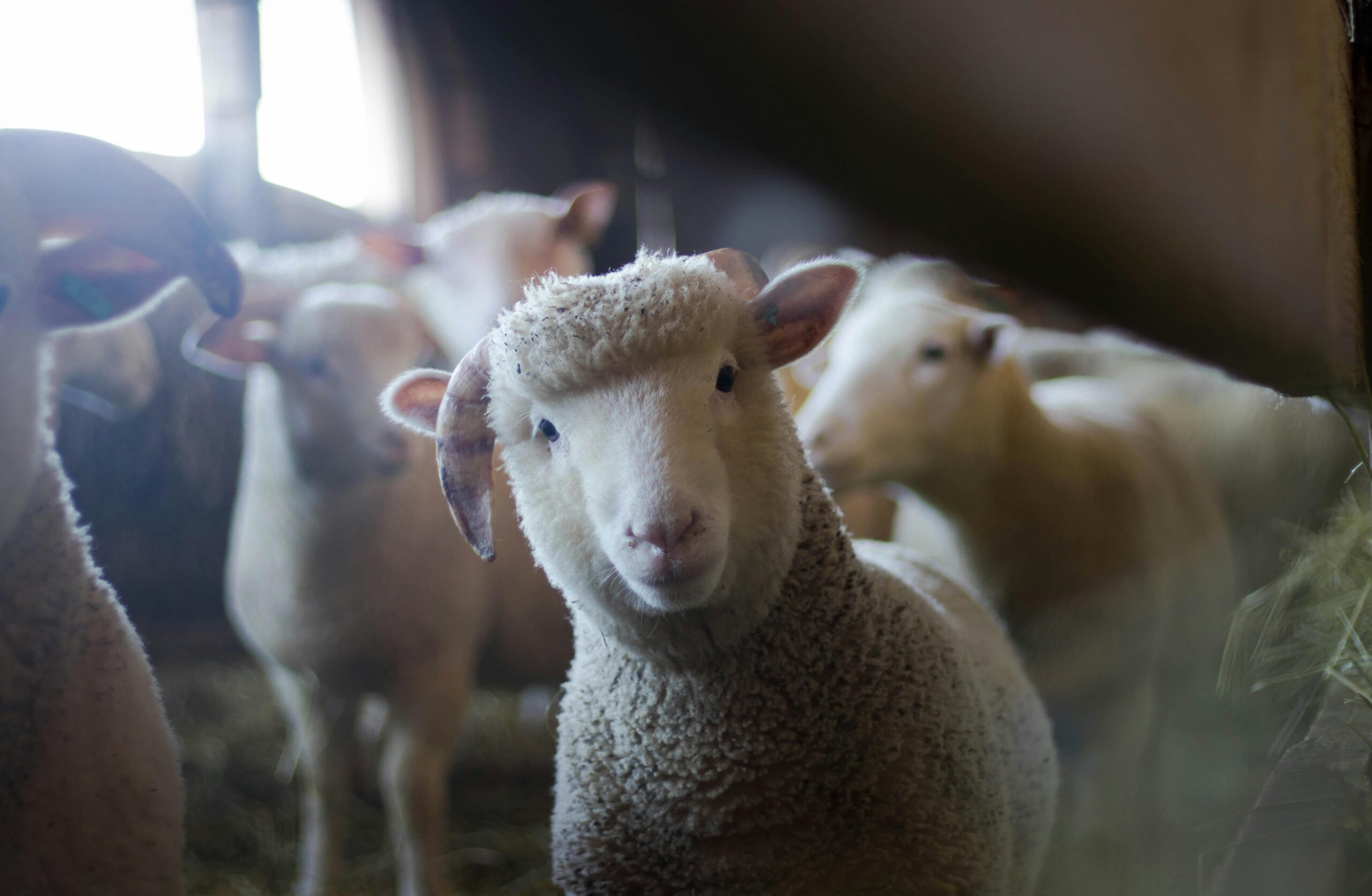Animal husbandry is a vital aspect of agricultural practices that involves the breeding, care, and management of livestock. This comprehensive guide aims to provide valuable insights into the techniques, best practices, and benefits associated with animal husbandry. Whether you’re a seasoned farmer or simply interested in understanding the intricacies of livestock management, this article will equip you with the knowledge you need to ensure the health, well-being, and productivity of your animals. So, let’s dive into the world of animal husbandry and explore the fascinating realm of livestock care.
The Importance of Animal Husbandry
Animal husbandry plays a crucial role in various aspects of our society, including food production, economic stability, and environmental sustainability. Here are some key reasons why animal husbandry is important:
1. Food Security
Animal husbandry is essential for ensuring a steady supply of high-quality animal-based products, such as meat, milk, eggs, and honey. Livestock farming provides a valuable source of protein and essential nutrients for human consumption, contributing to food security worldwide.
2. Livelihoods
Animal husbandry is a significant source of income and livelihood for millions of people around the globe. It offers employment opportunities not only in farming but also in related sectors such as veterinary services, feed production, and transportation. By supporting the livestock industry, animal husbandry helps sustain rural economies and improve livelihoods.
3. Sustainable Agriculture
Integrating animal husbandry into agricultural practices promotes sustainable farming. Livestock provide natural fertilizers through manure, which enriches the soil and enhances its fertility. Moreover, livestock grazing can help manage vegetation, reducing the risk of wildfires and promoting biodiversity in certain ecosystems.
4. Conservation of Breeds
Animal husbandry contributes to the conservation of various livestock breeds, preserving genetic diversity and protecting valuable genetic resources. By maintaining different breeds, we ensure their survival and adaptability to changing environmental conditions.
5. Utilization of By-Products
Animal husbandry allows for the efficient utilization of by-products generated from livestock farming. These by-products, such as animal fats, bones, and hides, can be used in various industries, including pharmaceuticals, cosmetics, and manufacturing.
Overall, animal husbandry is a multifaceted practice that not only meets our nutritional needs but also supports livelihoods, fosters sustainable agriculture, promotes breed conservation, and maximizes resource utilization. Understanding the importance of animal husbandry is crucial for developing effective and responsible livestock management strategies.
Key Principles of Animal Husbandry
Successful animal husbandry relies on adhering to certain key principles that prioritize the well-being and optimal care of livestock. Here are some fundamental principles to consider:
1. Proper Housing and Shelter
Providing suitable housing and shelter is crucial for the health and welfare of animals. Livestock should have adequate space, proper ventilation, protection from extreme weather conditions, and clean bedding to ensure their comfort and prevent the spread of diseases.
2. Nutritional Needs
Feeding animals a balanced and nutritious diet is essential for their growth, productivity, and overall health. Animal husbandry practices should involve understanding the specific dietary requirements of different species and providing them with appropriate feed and access to clean water.
3. Disease Prevention and Veterinary Care
Preventing diseases through vaccination, regular health check-ups, and maintaining good hygiene practices is critical in animal husbandry. Prompt veterinary care and timely treatment of illnesses or injuries should be prioritized to ensure the well-being of the livestock.
4. Breeding and Genetics
Animal husbandry involves responsible breeding practices to improve the genetic traits of livestock. Selective breeding and careful genetic management can lead to healthier and more productive animals, enhancing overall farm efficiency.
5. Animal Welfare and Ethical Treatment
Animal welfare should be a top priority in animal husbandry. Livestock should be handled and treated with care, minimizing stress and providing them with an environment that allows for natural behaviors. Practices such as overcrowding, confinement, or any form of cruelty should be avoided.
6. Environmental Considerations
A sustainable approach to animal husbandry involves minimizing the environmental impact of livestock farming. This includes proper waste management, reducing pollution, and implementing practices that conserve natural resources and protect ecosystems.
By adhering to these key principles, animal husbandry can promote the well-being of livestock, improve farm productivity, and contribute to sustainable and responsible agricultural practices.
Challenges in Animal Husbandry
While animal husbandry offers numerous benefits, there are also challenges that farmers and livestock managers may face. Understanding and addressing these challenges is crucial for successful animal husbandry. Here are some common challenges:
1. Disease Outbreaks
Disease outbreaks can significantly impact livestock health and productivity. Contagious diseases can spread rapidly among animals, leading to economic losses and potential risks to human health. Implementing proper biosecurity measures, vaccination programs, and regular veterinary monitoring can help prevent and manage disease outbreaks.
2. Climate Change Effects
Climate change poses challenges in animal husbandry, as it can result in extreme weather conditions, shifts in seasonal patterns, and changes in disease prevalence. Adapting livestock management practices, improving heat stress prevention measures, and implementing sustainable farming techniques can help mitigate the effects of climate change.
3. Financial Constraints
Livestock farming often involves significant financial investments in infrastructure, feed, veterinary care, and equipment. Farmers may face challenges in securing adequate funding, especially during times of economic uncertainty. Accessing financial resources, planning budgets, and exploring cost-effective solutions can help overcome these constraints.
4. Regulatory Compliance
Complying with regulations and standards related to animal welfare, food safety, and environmental protection can be challenging for livestock farmers. Staying informed about relevant laws, implementing necessary measures, and maintaining accurate records is essential to meet regulatory requirements and ensure responsible animal husbandry practices.
5. Market Volatility
The livestock market can be subject to price fluctuations, supply and demand imbalances, and changing consumer preferences. Farmers may face challenges in navigating market volatility and ensuring profitability. Diversifying products, exploring value-added opportunities, and staying informed about market trends can help mitigate these challenges.
6. Labor Shortages
Finding skilled labor for animal husbandry can be a challenge, particularly in rural areas. The physical demands and specialized knowledge required for livestock management make it essential to recruit and retain qualified personnel. Offering competitive wages, providing training opportunities, and promoting the importance of the industry can help address labor shortages.
By recognizing and proactively addressing these challenges, farmers and livestock managers can enhance their resilience and ensure the long-term success of their animal husbandry practices.
Technological Advancements in Animal Husbandry
Advancements in technology have revolutionized the field of animal husbandry, offering innovative solutions to improve efficiency, productivity, and animal welfare. Here are some notable technological advancements in animal husbandry:
1. Precision Livestock Farming
Precision livestock farming involves the use of various sensors, monitoring systems, and data analytics to track and manage individual animals or herds. These technologies provide real-time information on animal health, behavior, feed intake, and environmental conditions, allowing farmers to make data-driven decisions for optimal management.
2. Automated Feeding Systems
Automated feeding systems utilize robotics and advanced software to deliver precise amounts of feed to individual animals according to their nutritional requirements. These systems help optimize feed efficiency, reduce waste, and enable personalized feeding plans for improved animal health and productivity.
3. Remote Monitoring and Control
Remote monitoring and control systems allow farmers to monitor and manage livestock remotely. Through sensors, cameras, and connectivity, farmers can observe animal behavior, environmental conditions, and even control equipment such as ventilation systems or automated feeders from a distance. This technology enhances efficiency and enables timely responses to any issues.
4. Genetic Selection and Genomic Testing
Advancements in genetic selection and genomic testing have revolutionized breeding programs in animal husbandry. DNA analysis and genomic testing enable the identification of desirable traits, such as disease resistance, growth rate, or milk production potential, allowing farmers to make informed decisions for breeding healthier and more productive livestock.
5. Wearable Technology
Wearable technology, such as smart collars or ear tags equipped with sensors, can provide valuable insights into animal health and behavior. These devices can monitor vital signs, detect early signs of illness, track movement patterns, and even facilitate automated identification, making it easier for farmers to monitor individual animals and detect any deviations from normal behavior.
6. Waste Management Technologies
Technological advancements have also improved waste management practices in animal husbandry. Systems for anaerobic digestion, composting, or nutrient recovery from manure help reduce environmental impact, generate renewable energy, and produce valuable fertilizers while minimizing odors and pollution.
These technological advancements continue to evolve, offering exciting possibilities for the future of animal husbandry. Embracing these innovations can lead to more efficient, sustainable, and animal-friendly farming practices.
The Future of Animal Husbandry
The future of animal husbandry holds great potential for advancements that will shape the industry in new and exciting ways. Here are some key areas that are likely to influence the future of animal husbandry:
1. Sustainable and Alternative Feed Sources
As the demand for livestock products continues to rise, there is a growing need to find sustainable and alternative feed sources. Research and innovation are focused on developing feed options such as insect-based protein, algae, and single-cell proteins that can provide nutritional value while reducing the environmental impact of livestock farming.
2. Precision Nutrition and Personalized Diets
The future may bring advancements in precision nutrition, where animals’ nutritional needs are tailored to their individual requirements. Technologies like genetic profiling, real-time monitoring, and analytics can help create personalized diets that optimize animal health, performance, and reduce waste.
3. Robotics and Automation
Robotic systems and automation are likely to play an increasingly important role in animal husbandry. Robots can assist with tasks such as feeding, milking, cleaning, and even monitoring animal behavior. These technologies improve efficiency, reduce labor requirements, and enhance animal welfare.
4. Artificial Intelligence and Data Analytics
Artificial intelligence (AI) and data analytics will continue to transform animal husbandry. AI algorithms can analyze large volumes of data collected from various sources, such as sensors, cameras, and health records, to provide valuable insights for optimizing animal management, disease prediction, and improving overall farm performance.
5. Genetic Engineering and Genomic Editing
Advancements in genetic engineering and genomic editing techniques hold promise for improving livestock traits, disease resistance, and overall productivity. These technologies can be used to introduce beneficial genetic modifications or remove undesirable traits, paving the way for more efficient and sustainable animal production.
6. Blockchain Applications in Traceability
Blockchain technology can enhance traceability and transparency in the animal husbandry industry. By utilizing blockchain-based systems, it becomes easier to track and verify the origin, health records, and conditions of livestock, providing consumers with greater confidence in the quality and ethical standards of the products they purchase.
The future of animal husbandry will be shaped by these and other emerging technologies, aiming to address challenges, improve efficiency, and ensure a sustainable and ethical approach to livestock farming.
In conclusion, animal husbandry plays a vital role in our society, providing us with essential food products, supporting livelihoods, and promoting sustainable agriculture. It encompasses various principles such as proper housing, nutrition, disease prevention, and ethical treatment. Although there are challenges to overcome, advancements in technology continue to revolutionize the field, offering innovative solutions for efficient and responsible livestock management.
The future of animal husbandry looks promising, with a focus on sustainable feed sources, precision nutrition, robotics, artificial intelligence, genetic engineering, and blockchain applications. These advancements aim to address environmental concerns, improve animal welfare, optimize productivity, and meet the increasing demand for livestock products in a responsible manner.
By embracing these advancements and adhering to the fundamental principles of animal husbandry, we can ensure the well-being of our livestock, enhance farm productivity, and contribute to a more sustainable and ethical agricultural industry. It is through the collective efforts of farmers, researchers, and consumers that we can shape a future where animal husbandry thrives while preserving the health of our planet and meeting the needs of a growing population.

